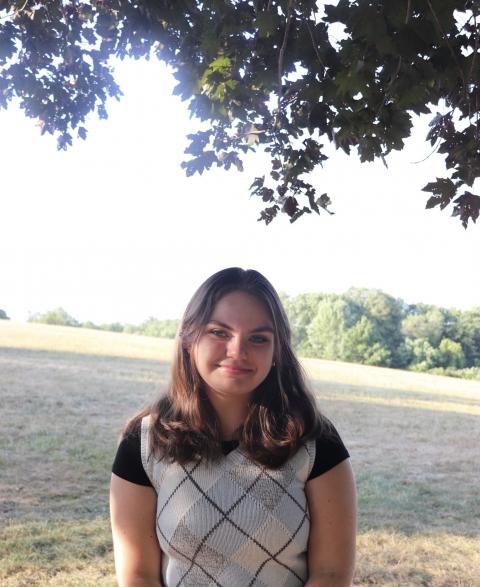The Growing Field of Neuroscience
My fascination with the brain began in high school, fostered by the entry-level anatomy and psychology classes available to me as a young student. The more I learned about the brain, the more I realized there is a lot we don’t know about how it functions; modern science is constantly evolving and making new discoveries, revising what we previously thought was true. When I applied to UNH, it seemed obvious that I would pursue a bachelor’s in neuroscience. I quickly joined my mentor’s neuroscience lab in the spring semester of my freshman year. Now, over two years later, I am completing a Summer Undergraduate Research Fellowship (SURF) investigating neuronal primary cilia in the mouse brain.

My project specifically focuses on neuronal primary cilia of the hippocampus, a brain structure heavily involved in memory. Primary cilia are thin extensions that emanate from neurons, responsible for a variety of functions. I am most interested in how they help form the various layers and sublayers of the hippocampus. To investigate this phenomenon, I am looking at their lengths and angles at varying postnatal days in mice. These measurements help reveal how the hippocampus develops after birth, and how its cells migrate to their final positions. Understanding hippocampal structure at the cellular level is key to finding out more about its precise function.
I start my mornings on the third floor of Rudman Hall, equipped with a plan for the day. A typical week in the lab includes multiple steps of the research process. Some days, I perform the necessary genotyping for DNA samples obtained from our mice. This is particularly important for determining whether a mouse will serve as part of a control group or experimental group based on its genetic background. It is done by first putting DNA through PCR to create millions of copies of a target region. Then, those copies are used in gel electrophoresis, a method for separating DNA fragments and distinguishing between different genotypes.
Other days, I spend time in the animal room dealing with the mice directly. Since various strains of mice are always being bred, cages need to be checked daily for new pups. When the pups reach two weeks of age, they are weaned, tagged with their own unique number, and a piece of their tail is cut as a DNA sample. It is important that all mice are accounted for. Some mice undergo behavior experiments, some undergo surgery, and some are simply used because of their genotype. Ultimately, they are all humanely euthanized and their brains are removed and prepared for observation.
The majority of my time in the lab revolves around immunostaining—one of the most important steps in my research. Once the mouse brains are fixed with paraformaldehyde and dehydrated with sucrose, I slice them into extremely thin sections (usually 30-50 micrometers) using a special machine called a cryostat. These thin sections are now ready for the two-day immunostaining process. In a nutshell, immunostaining utilizes antibodies to tag specific portions of a cell. Two different antibodies are necessary for each cell target: the primary antibody, which binds to the target itself, and the secondary antibody, which contains a fluorescent protein and binds to the primary antibody. Although this seems like a simple process, it must be carried out meticulously. Everything needs to be used with the proper ratios and dilutions. If something goes wrong during immunostaining, a whole tissue sample can go to waste, costing you time and money.
The next step following immunostaining is to actually take pictures of the tissue. On these days, I head over to the University Instrumentation Center in Parsons Hall, which houses the confocal microscope. It works by shining lasers of different wavelengths onto the slides containing the brain tissue slices, which I prepare after immunostaining them. The lasers I enable on the microscope depend on the secondary antibodies I used, since each corresponds to a color. Taking pictures with the confocal requires a lot of time, about 3-4 hours per session, and it involves a lot of waiting. I make sure to bring my laptop and work on other things, like analyzing previously collected images, reading papers, and responding to emails.
Finally, after several days of preparing and imaging the brain tissue, I get to gather real, tangible results. If all went well and my confocal images are clear, this step is fairly easy, but it can take a few hours. I measure the cilia on a program called ImageJ, input the data into an Excel file, and make the appropriate graphs/charts to compare different groups. This is all repeated several times until enough brains have been analyzed to provide significant results.
Research is almost never a linear process. You often make revisions in your methodology, repeat steps, and adjust your direction based on which results look promising. In the end, you may end up with more questions than when you started, but that’s what makes science interesting. There is always more to learn.